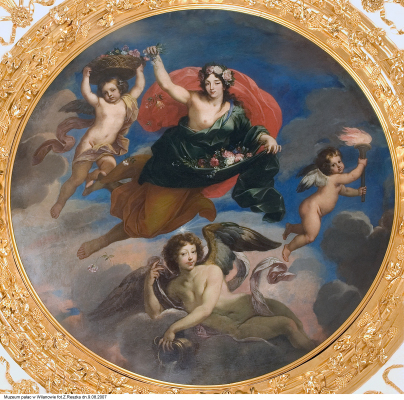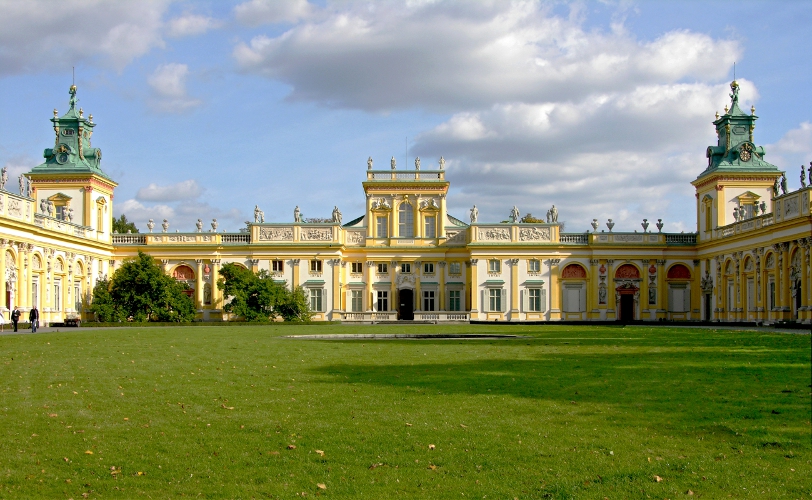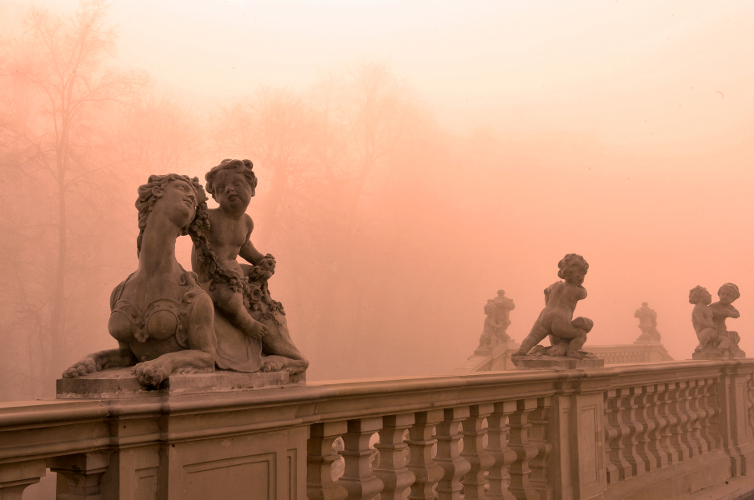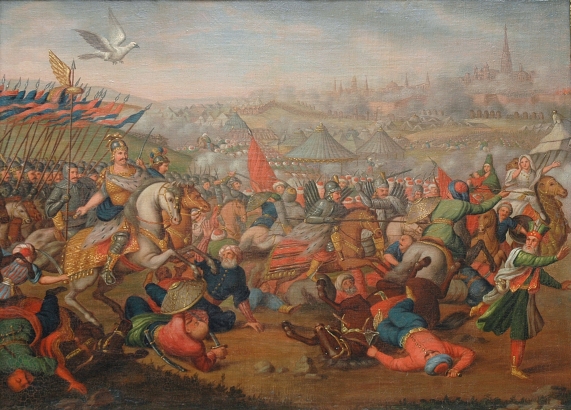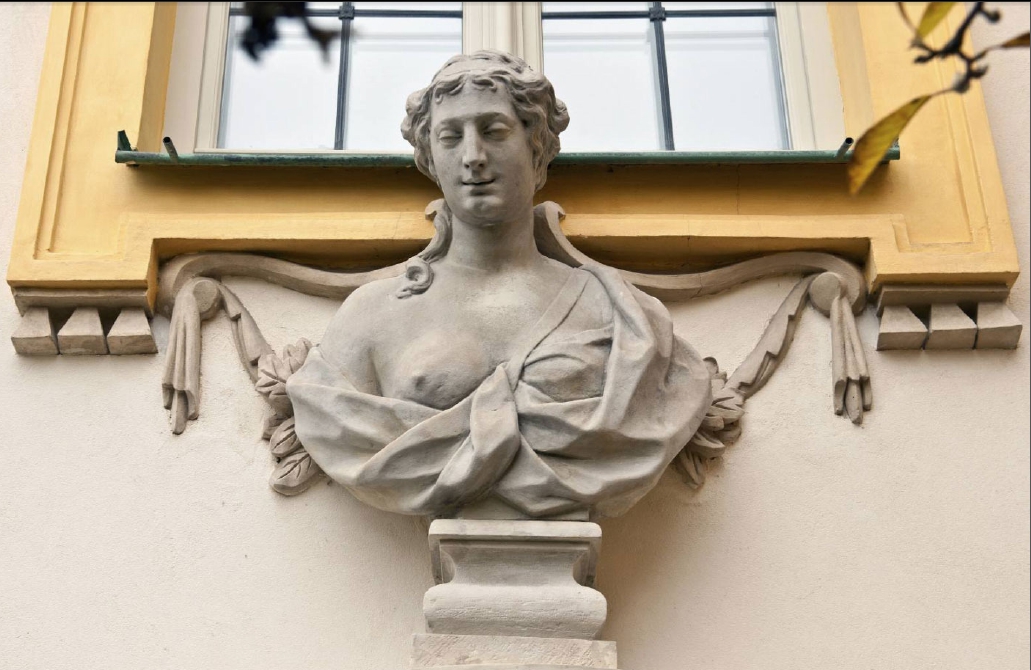Without a doubt, Jan Reisner counts among the greatest and most intriguing Polish artists associated with the court of King Jan III — though, to be sure, he also worked for other local patrons of the late seventeenth and early eighteenth century. For a long time, he remained virtually anonymous to scholars and lovers of art. The process of unearthing the biography of the artist and identifying his works began almost sixty years ago with the efforts of Mariusz Karpowicz; thanks to archival findings of the scholar, Reisner became a conspicuous presence. Recent years brought the discovery of the first work signed by the artist and a spate of new information about his heretofore unattributed creations. Reisner thus still seems to hold a few tricks up his sleeve as an artist, with new discoveries still certain to be made.
So far, most of the discoveries concern his biography. It is assumed that he was born around 1655 (the painter’s surviving epitaph at the parish church in Węgrów states that he died on 9 December 1713 aged 58), but the place and circumstances of his birth are unknown. His origins are traced to Lviv or its broadly conceived vicinity, and his social background is believed to have been bourgeois. His presence in Warsaw is recorded in the parish register at the Holy Cross Church beginning in 1674, the time of his assumed permanent settlement in the capital. The exact date of commencement of his relations with the court of Jan III is unknown, but from ca. 1678 on he has undoubtedly spent a few years in Rome (and perhaps stayed in Paris for a bit, as well) on a royal scholarship. He completed his education with flying colours in 1682, receiving the First Prize from the Accademia di san Luca in Rome for his architectural designs (concerning a central-dome church with space for painted decorations, a project maintained in the collections of the Accademia), after which he was inducted into this prestigious and influential institution (among whose members were Bernini, Poussin, and Velazquez, among others). At his induction, the members of the Academy demanded of Reisner to provide the institution with an independently produced painting, a fact which indicates his high standing in this milieu both as an architect and as a painter. Concurrently, he received the Order of the Golden Spur from Pope Innocent XI, which bestowed upon him the title of Auratae Militiae Eques. This amounted to being knighted, a fact recognised in Poland as well; Reisner used the title of the Knight of the Golden Spur in official papers until the end of his life and included it in his only known signature. His Roman triumphs were, in fact, unprecedented among modern Polish artists (Reisner’s only other contemporary counterpart in that regard was another equally talented painter in the employ of Jan III — Jerzy Eleuter Szymonowicz-Siemiginowski).
In 1683, Reisner returned to his native country by way of Vienna, which he visited before the siege to acquire paintings for the King. From that point on until 1696, his name is associated in multiple ways with Warsaw, where he consorted with craftsmen and artists in the royal employ, while maintaining positive relations with the monastic orders in the city. In 1692, he married Cecylia Lauro, a widow of a royal musician in the employ of the Vasas, and moved into a house located by the Royal Castle. Material proofs of Jan III’s favour bestowed upon Reisner are well known. Most of his work took place in Wilanów, where he received aid from assistants. During that period, he was primarily occupied with painting; portraits played a key part in his output, but he is also known to have engaged in other exploits, for instance, designing carriages. Clearly, he was a successful entrepreneur who could count on many patrons.
With the demise of Jan III, Reisner’s situation grew slightly more complex. The new ruler, August II, officially took him under his wing with a special document in 1699, though on that occasion Reisner was named as the royal surveyor and geographer, not painter. As Mariusz Karpowicz rightly surmises, it was the artist himself, unsure of his situation, that opted to bank on his technical education and the noble status received from the Papacy, rather than stressing his virtues as a painter, due to the low standing of the latter vocation in the circles of the nobility. It was probably due to this fact that Reisner decided, shortly after 1702, to leave Warsaw for good and settle in Węgrów, in the estate of the Płock Voivode Jan Dobrogost Krasiński, serving as marshal at the Voivode’s court as well as his surveyor, which means that he was mostly employed as an architect. He died in Węgrów in 1713. However, the perception of Reisner as an exceptional painter must have been prevalent among the Commonwealth’s elites, since in 1714 Jadwiga Rafałowicz, a friend of the powerful and influential Elżbieta Sieniawska wrote her: ‘The late Mr. Ryzner (who has died only recently) left behind paintings that are being sold at the Honourable Płock Voivode’s in Stara Wieś; I heard say they are very beautiful’. Such compliments were rarely addressed at painters in Poland of the time.
Thus, we know quite a lot about Reisner’s life. We are also learning of an increasing number of his works. But the process of identification of the paintings of the royal artist is demanding and complex. While certain archival indications exist concerning Reisner’s oeuvre, they mostly concern portraits, often painted at the request of King Jan III, such as the full-body portrait of the royal pair mentioned as part of the painter’s estate, or pictures of the French princes previously held in Zhovkva. However, neither of these works has thus far been identified. It is also known that Reisner painted outstanding figures of his era: Elżbieta Sieniawska and the King’s cousin, Cardinal Michał Stefan Radziejowski. His brushwork was only cautiously sought in pictures of the latter (this list includes the formidable paintings held in the National Museum and the Historical Museum in Warsaw, the former being a pastel). Yet, the absence of portraits signed by Reisner is palpable and greatly hampers further attributions.
Some large-scale works of the royal artist have been identified: this was achieved by Mariusz Karpowicz, who conducted a highly convincing analysis of archival sources and set his results against our knowledge of the features of paintings of Roman artists of the late seventeenth century, which constitute an adequate reference point for Reisner’s oeuvre given his Roman education. His is evidently the large-scale Lamentation of Christ at the Visitation Church in Warsaw, which was probably donated to the church by his wife (whose daughter, and Reisner’s step-daughter, entered the convent in 1693). According to Mariusz Karpowicz, the attribution of the Lamentation to the royal painter makes it possible to ascribe to him one of the more famous plafonds from the interiors of the Wilanów Palace: Aurora, found in the Mirror Cabinet in the avant-corps of the ground floor of the main part of the palace toward the garden. The painted decorations of the cornice under the plafond depicting Autumn in the Queen’s Antechamber is also associated with Reisner. Obviously, if the King employed an artist in his residence at Wilanów, the latter must have played a significant role in decorating it, sharing the work with Siemiginowski, his colleague since Rome. Reisner’s involvement in decorating the palace is symbolised by two circular, rather sketchy paintings from a single author (perhaps indeed drawn by Reisner, though this attribution is disputed), kept in the collections of the National Museum in Warsaw (Glorification of the Virtues of Jan III) and at Wawel (Glorification of Jan III’s Patronage). The former bears a suggestive inscription on the back, which seems to indicate that the painting was presented to the King by Reisner on ‘S[aint] John’s [Day]’, that is, on his name day, no less! It had been even suggested that the paintings were in fact designs for a plafond in the King’s Cabinet at the Wilanów Palace (at the north-eastern bay of the main body), whose original ceiling decorations have not survived. However, the association cannot be assumed proven so far.
Recently, the first work signed by Reisner has finally been identified. The artistically accomplished and perfectly maintained painting depicting The Sermon of St. John the Baptist in one of the side altars of the Camaldolese church in Cracow’s Bielany bears a signature which includes an abbreviated version of the painter’s name along with the title bestowed upon him by the Pope in Rome and the date ‘I. Rei. Eques 1689’ (the painting in the lower section of the same altar, portraying The Baptism of Christ, is doubtless the work of the same brush). The presence of a work by Reisner in a monastery on the outskirts of Cracow can be attributed to the monarch, who may have funded this altarpiece devoted to his patron saint. Jan Sobieski must have held fond memories of the service he took part in at the Cracow Bielany immediately before his departure to Vienna in 1683. Other works by Reisner would be found in Cracow — the Visitation church in the city holds a study replica of the painting at Bielany.
Several other paintings have been more or less successfully tied with Reisner, but the aforementioned works provide sufficient basis for a general characteristic of the painter. The Polish artist, trained in Rome — perhaps the most prominent centre of education in painting in Europe — may have also been familiar with the art of another great city of artists — Paris. He acquainted himself thoroughly with the style of these milieus and kept faith with it throughout his long career in Poland. In accordance with the custom of the period, he creatively appropriated the style of his Roman masters, perhaps with the help of engravings. Among painters who seem to have exerted a particular influence on Reisner one should name Luigi Garzi (1638–1721), who was active in Rome in the same period. The works of the Polish artist bear traces of clear inspiration with solutions applied by Garzi.
Reisner’s consistently superlative works are composed in very thorough, highly deliberate, clear manner that perfectly accentuates — thanks to a coherent definition of principal lines of sight of the viewer — the content of the works, typically made up of allegorical, though not overcomplicated programmes beloved of admirers of courtly art in the late seventeenth century. The loosely-formed figures at times clearly capture many facets of the peculiar elegance characteristic of French painting of the era. Reisner’s idyllic landscapes and floral motifs (as in the painting found at Bielany) are often quite impeccable. The faultless chiaroscuro and formidable colouring — lucid, clear, rather cool, at times even metallic — contributes to the effect these compositions have on the viewer. Reisner created images in the spirit of Italian Baroque with a tinge of Classicism — precisely the kind that King Jan III wanted to surround himself with. Thus it may be said that the expectations of the monarch, who sponsored the young and gifted local painter’s trip to Rome, were completely fulfilled, and the Polish art of the modern period gained an artist who produced works of technical novelty and artistic quality comparable to the best paintings of the leading European milieus of the second half of the seventeenth century.
Translation: Antoni Górny
